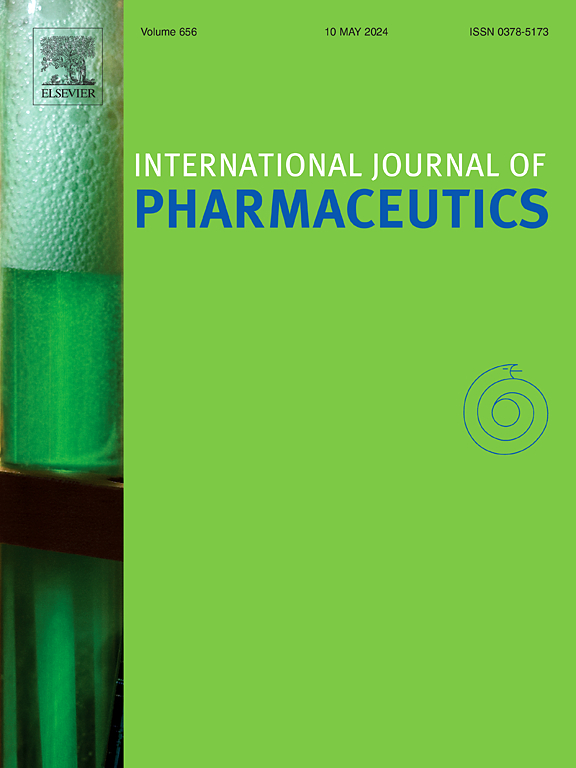Targeted nasal delivery of LNP-mRNAs aerosolised by Rayleigh breakup technology
IF 5.3
2区 医学
Q1 PHARMACOLOGY & PHARMACY
引用次数: 0
Abstract
The nasal delivery of mRNA vaccines attracts great interests in both academia and industry. While the lipid nanoparticle (LNP)-mRNA complexes are vulnerable and need a subtle process for aerosolisation. In this study, a new nasal atomizer, based on the working rationale of Rayleigh breakup, was employed to aerosolise LNP-mRNAs. The data revealed no statistical differences in physiochemical properties before and after aerosolisation, strongly suggesting LNP-mRNAs be well preserved upon aerosolisation by Rayleigh breakup technology. Additionally, these Rayleigh breakup droplets showed a physical size of ∼25 µm in mean with a narrow size distribution (Span: 1.24) and demonstrated a large portion (70–80 % w/w) greater than 10 µm in aerodynamic diameter, strongly suggesting a predominate deposition in the upper airway and designating a great appropriateness for nasal drug delivery. Furthermore, the recently developed Alberta Idealized Nasal Inlet (AINI) was utilized to evaluate the regional nasal deposition of LNP-mRNA aerosols. It was demonstrated that, at the administration angle of 45°, the major deposition of mRNAs (>50 % w/w) was in the target region of turbinates. The inhalation airflow at 7.5 L/min can maximize the targeted delivery of mRNA (∼64 % w/w) and minimize the undesirable depositions in other segments. This study provides a new approach to aerosolise LNP-mRNAs with undisturbed stabilities for targeted nasal vaccine delivery.

求助全文
约1分钟内获得全文
求助全文
来源期刊
CiteScore
10.70
自引率
8.60%
发文量
951
审稿时长
72 days
期刊介绍:
The International Journal of Pharmaceutics is the third most cited journal in the "Pharmacy & Pharmacology" category out of 366 journals, being the true home for pharmaceutical scientists concerned with the physical, chemical and biological properties of devices and delivery systems for drugs, vaccines and biologicals, including their design, manufacture and evaluation. This includes evaluation of the properties of drugs, excipients such as surfactants and polymers and novel materials. The journal has special sections on pharmaceutical nanotechnology and personalized medicines, and publishes research papers, reviews, commentaries and letters to the editor as well as special issues.

 求助内容:
求助内容: 应助结果提醒方式:
应助结果提醒方式:


